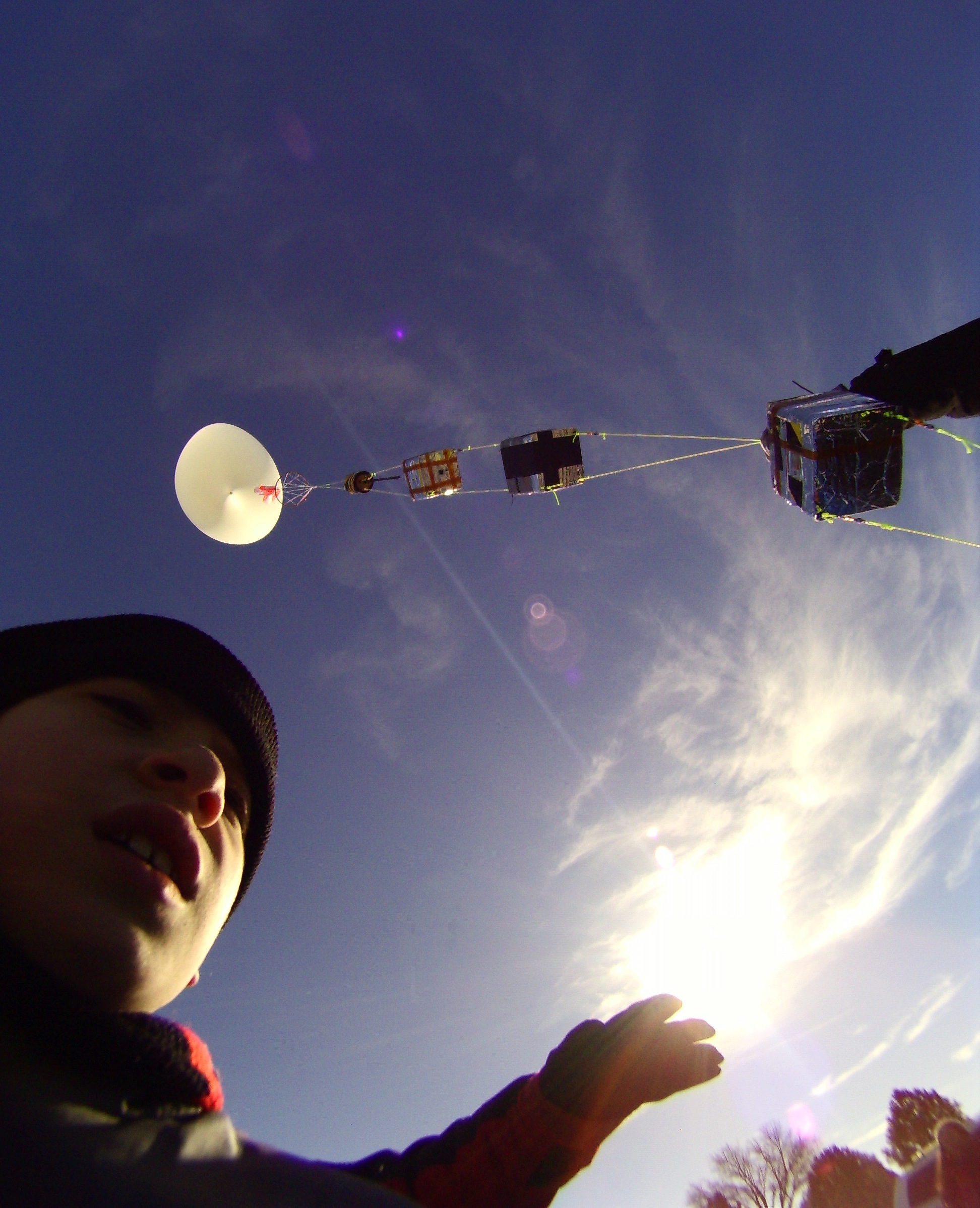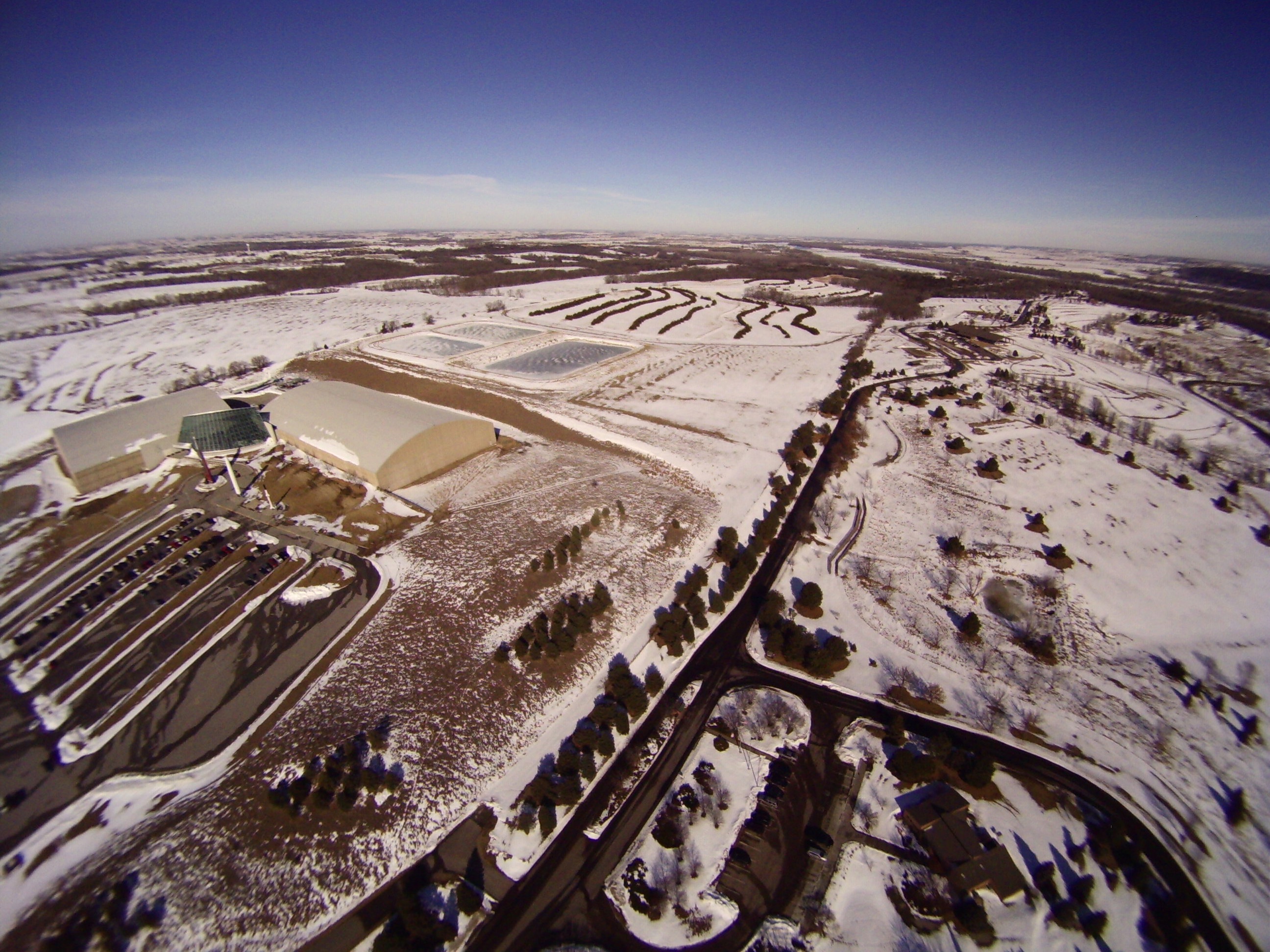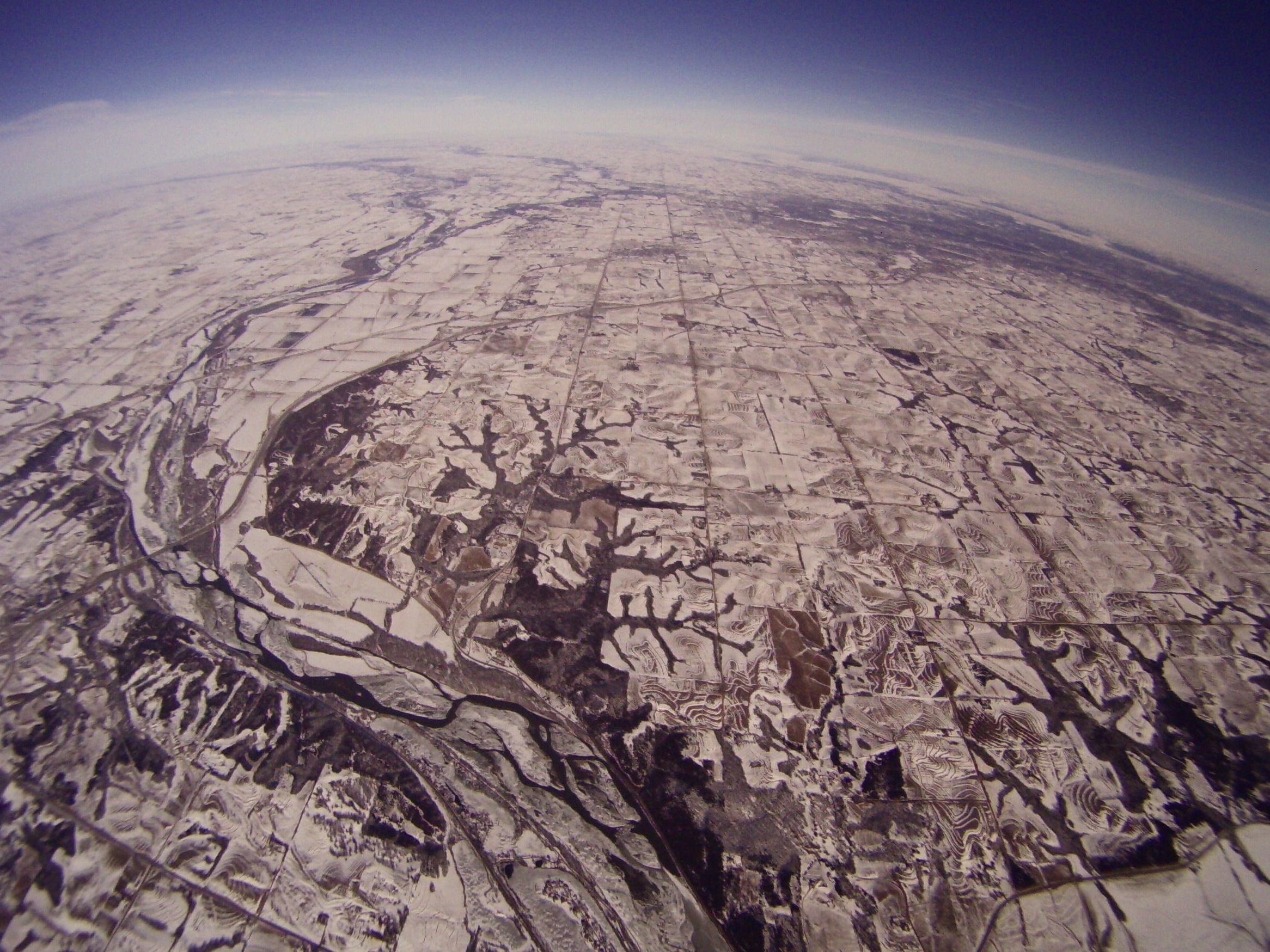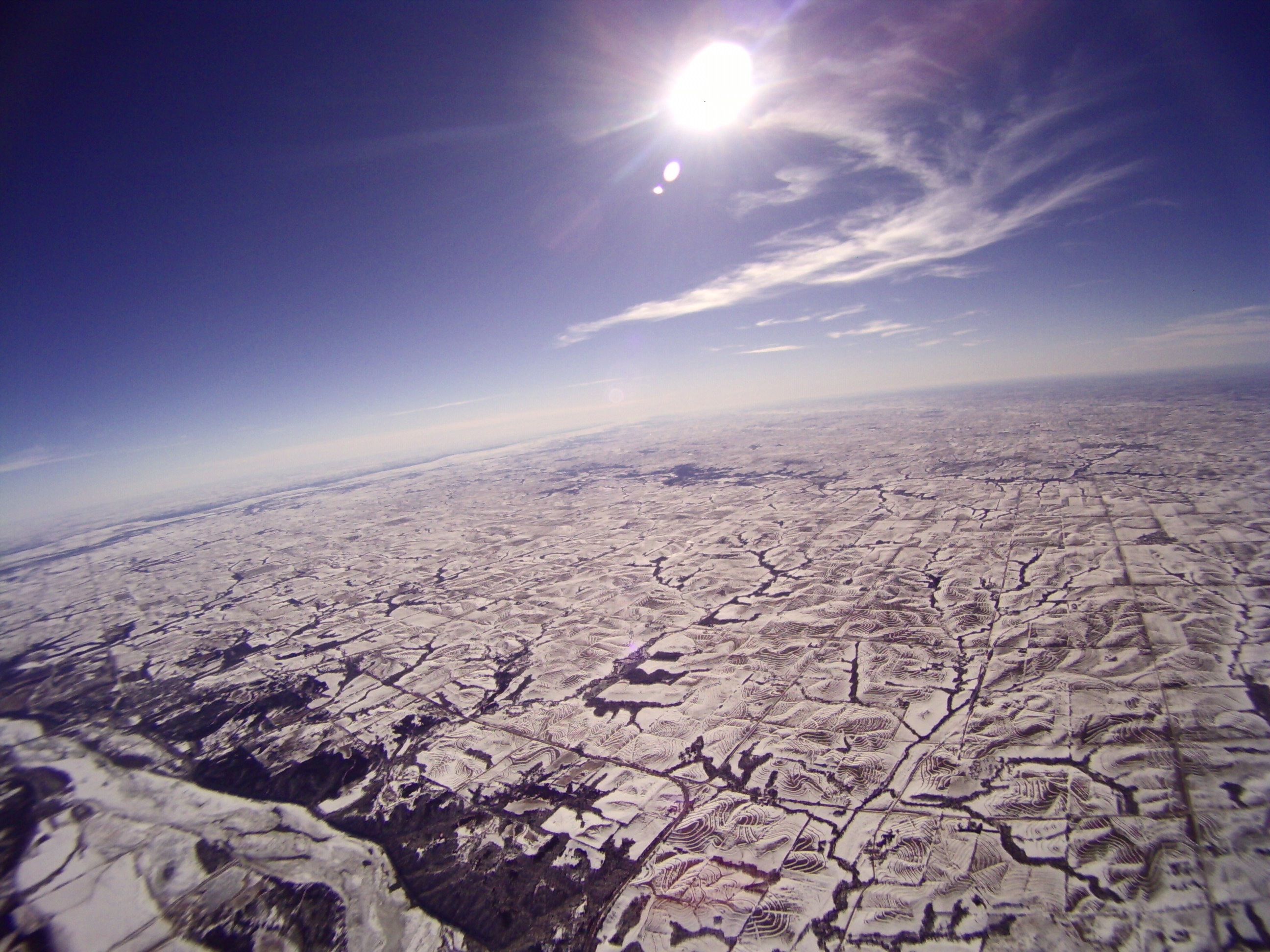(Originally written 2/14/11)
This quarter, my college offered the first High-Altitude Ballooning Experience class as Special Topics in Physics. This short workshop was to introduce participants to the world of High-Altitude Ballooning (HAB) and provide the background necessary to design a pod with scientific sensors and to participate in the launch and retrieval of the equipment.
During the first night of the workshop, the students learned about the background of high altitude ballooning and broke into small teams to design their experiments. Approximately a month later, we had our second meeting in which the groups built their scientific pods.
On Saturday, Feb. 12 at around 10:30 am, we launched the balloon from the Strategic Air and Space Museum. We used helium to fill a weather balloon, tied the pods together like the tail of a kite and released it.
The command module on the balloon sends information from the digital interfaces of each pod so we could track all of our information while the balloon was in flight. We had two chase vehicles and a base station at the museum to track the balloon and record the data. The students were using sensors to measure temperature, pressure, acceleration, radiation, sound amplitude, altitude, speed, and position along with other non-digital experiments such as bacteria samples, yeast, and seeds. Jason, the president of Stratostar, the company that makes the equipment we were using, was helping for our first launch.
I was thrilled that the temperature was going to be in the 40s on Saturday rather than the very cold weather we have had in the last few weeks. It was still chilly and windy on Saturday morning, but everyone was in good spirits as the balloon was launched.
Our prediction program had the balloon getting caught in the jet stream, heading southeast, bursting at approximately 90,000 ft. and landing near Maryville, MO. It usually takes an hour to reach what is called “near space” and a half-hour for the decent using a parachute.
Because the prediction of the flight was over 100 miles as the crow (or the balloon) flies, it was determined that one vehicle would need to scout ahead at least 30 minutes before the launch because we wanted to make sure to keep a line of sight with the balloon and not lose any of our data.
Everything was working well until the balloon reached 81,000 ft. At that time, both vehicles and the base station lost contact with the command module, our main GPS unit that was transmitting our data. We think at that time, the balloon burst and entered “post-burst chaos.” Since there is very little atmosphere, the parachute will not open until the air becomes more dense so the equipment tumbles and is shaken very violently. Unfortunately, at the same time, our backup system called an APRS radio transmitter stopped working too.
Jason decided to put a secondary backup called a Spot personal satellite tracker that is generally sold to outdoor adventurers in the pod that had the cameras attached, but he told us that it works “about half the time” because it needs to land in a certain orientation. After an agonizing 20 minutes, we did get a satellite signal from that with the latitude and longitude and determined that it was no longer moving.
The students were excited to find the source of the signal, but it only had the APRS system and two of the five pods. Evidently, this was separated from the rest and we had no way to find the others using our equipment. Despondent, we returned to the campus to regroup. We showed the students how to manipulate their data from the ascent so they could write their reports. When our external evaluator for NASA asked Jason how often this happens (meaning a failure of the main system and the backup), he said, “This almost NEVER happens.”
As the last few students were walking out the door, we got a voice mail from a woman who said, “We think we have your balloon.” It landed very near the predicted landing site in Missouri and the balloon got caught in a power line across from a farm house. Luckily, the farmer’s brother works for the power company and was able to turn off the power and safely retrieve the burst balloon, the parachute, the command module (minus the antenna), and two additional pods. We had stickers all over the equipment with a phone number and saying there would be a “reward if found.” On the following day, my husband (Michael) and I drove the two hours to get the equipment and gave the kind couple some gift cards as a reward for their trouble.
So, it was certainly a roller coaster of a weekend. We ended getting back the expensive transmitters, the cameras, and 4 out of 5 of the experiment pods with their sensors (and we still may get a phone call if someone finds the last one) and all of the groups have data for the ascent of the balloon. After speaking with a few of the students afterwards, they said that it was very exciting to be a part of this new pilot project and were interested in doing it again.











